
XDrive all-wheel drive system
Content
Compared to the vehicles of the last century, the modern car has become faster, its engine is more economical, but not at the expense of performance, and the comfort system allows you to enjoy driving a car, even if it is a representative of the budget class. At the same time, the active and passive safety system has been improved, and consist of a large number of elements.
But the safety of the car depends not only on the quality of the brakes or the number of airbags (for how they work, read here). How many accidents on the roads occurred due to the fact that the driver lost control of the vehicle when driving at high speed on an unstable surface or in a sharp turn! Different systems are used to stabilize transport in such situations. For example, when a car enters a tight corner, its center of gravity shifts to one side and it becomes more loaded. As a result, each wheel on the unloaded side loses traction. To eliminate this effect, there is a system of exchange rate stability, lateral stabilizers, etc.
But in order for the car to be able to overcome any difficult sections of the road, different automakers equip some of their models with a transmission that is able to turn each wheel, making it the leading one. This system is generally called four-wheel drive. Each manufacturer implements this development in its own way. For example, Mercedes-Benz has developed the 4Matic system, which is already mentioned separate review... Audi has a Quattro. BMW equips many car models with the xDrive transmission.
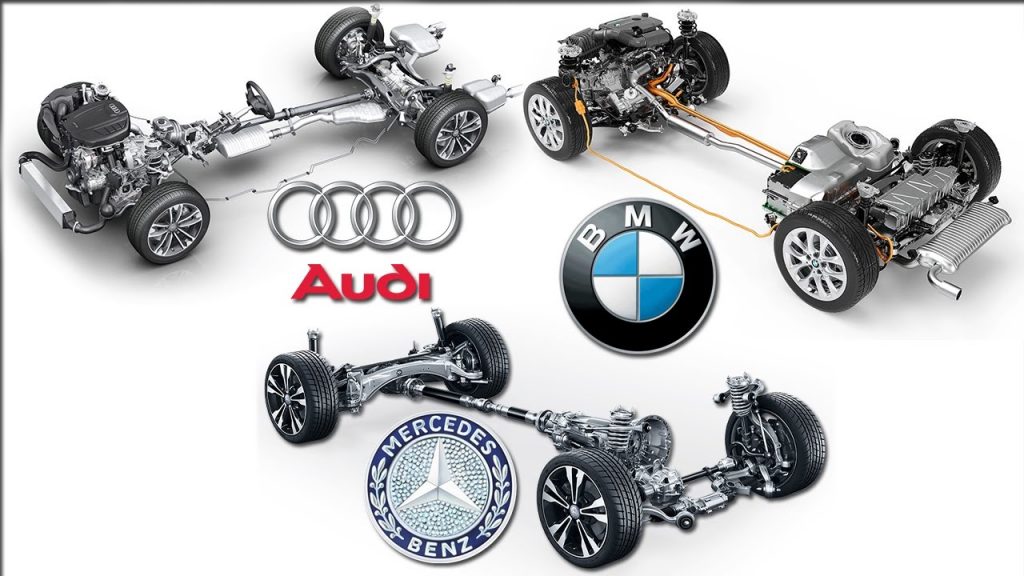
Such a transmission is mainly equipped with full-fledged SUVs, some crossover models (read about the difference between these types of cars separately), since these cars are more likely to be on poorly paved roads. For example, they are used to compete in cross-country competition. But some premium passenger cars or sports cars can also be equipped with four-wheel drive. In addition to being efficient on uncomplicated off-road terrain, such cars feel confident on a rapidly changing road situation. For example, heavy snow fell in winter, and snow removal equipment has not yet coped with its task.
An all-wheel-drive model has a better chance of tackling a snow-covered stretch of road than a front-wheel-drive or rear-wheel-drive counterpart. Modern systems have an automatic mode of operation, so that the driver does not need to control when to activate a particular option. Only leading companies develop such systems. Each of them has its own patent for the implementation of automatic all-wheel drive in their cars.
Let's consider how the xDrive system works, what elements it consists of, what are its features and some malfunctions.
General concept
Despite the fact that the torque in a car with such a transmission is distributed to all wheels, an all-wheel drive car cannot be called off-road. The main reason is that a station wagon, a sedan or a coupe has a small ground clearance, which is why it will not be possible to overcome serious off-road terrain - the car will simply sit in the first track knocked out by SUVs.
For this reason, the purpose of the active all-wheel drive system is to provide the best stability and control of the car on an unstable road, for example, when the vehicle gets into a snowy line or on ice. Driving a car with front-wheel drive, and even more so with rear-wheel drive in such conditions requires a lot of experience from the driver, especially if the speed of the car is high.
Regardless of the generation of the system, it will consist of:
- Gearboxes (for more details about the types and principle of gearbox operation, read here);
- Handouts (about what kind of mechanism it is, and why it is needed in the car, it is described in another article);
- Cardan shaft (how it works, and in what other auto systems can a cardan drive be used, read separately);
- Drive shaft for front wheels;
- Main gear on two axles.

This list does not include a differential for one simple reason. Each generation has received different modifications of this element. It was constantly being modernized, its design and principle of operation changed. For details on what a differential is and what work it does in a car's transmission, read here.
The manufacturer positions xDrive as a permanent all-wheel drive system. In fact, the first developments were offered in this design, and that was available exclusively for some models. For all other cars of the brand, the so-called plug-in four-wheel drive is available. That is, the second axle is connected when the main drive wheels slip. This transmission is found not only in BMW SUVs and crossovers, but also in many passenger car variants of the model line.
In the classical sense, four-wheel drive should provide maximum convenience in driving a vehicle in a dynamic mode on unstable road sections. This makes the machine easier to control. In principle, this is the main reason why all-wheel drive cars are used in rally competitions (other popular car competitions that use powerful cars are described in another review).
But if the torque is distributed along the axes in the wrong ratio, then this will affect:
- The responsiveness of the car when turning the steering wheel;
- Decrease in vehicle dynamics;
- Unstable movement of the car on straight sections of the road;
- Decreased comfort during maneuvers.
To eliminate all these effects, the Bavarian automaker took rear-wheel drive vehicles as a basis, modifying their transmission, improving vehicle safety.
The history of the creation and development of the system
For the first time, an all-wheel drive model from the Bavarian automaker appeared in 1985. In that era, there was no such thing as a crossover. Then everything that was larger than an ordinary sedan, hatchback or station wagon was called "Jeep" or SUV. But in the mid-80s, BMW had not yet developed this type of car. However, observations of the efficiency of all-wheel drive, which was already available in some Audi models, prompted the management of the Bavarian company to develop its own unit, which ensured the distribution of torque to each axle of the vehicle in a different ratio.
Optionally, this development was installed in the 3-Series and 5-Series models. Only a few cars could receive such equipment, and then only as an expensive option. To make these cars different from their rear-wheel drive counterparts, the series received the X index.Later (namely, in 2003) the company changed this designation to xDrive.

After successful testing of the system, its development followed, as a result of which there were as many as four generations. Each subsequent modification is distinguished by greater stability, the scheme according to which the power will be distributed along the axes and some changes in the design. The first three generations distributed the torque between the axles in a fixed manner (the ratio could not be changed).
Let's consider the features of each generation separately.
XNUMXst generation
As mentioned earlier, the history of the creation of all-wheel drive from the Bavarian automaker began in 1985. The first generation had a constant distribution of torque to the front and rear axles. True, the power ratio was asymmetrical - rear-wheel drive received 63 percent and front-wheel drive received 37 percent of the power.
The power distribution scheme was as follows. Between the axles, the torque was supposed to be distributed by a planetary differential. It was blocked by a viscous coupling (what kind of element it is and how it works is described in another review). Thanks to this design, if necessary, the transmission of traction to the front or rear axle could be provided up to 90 percent.
A viscous clutch was also installed in the rear center differential. The front axle was not equipped with a lock, and the differential was free. Read about why you need a differential lock. separately... The BMW iX325 (1985 release) was equipped with such a transmission.

Despite the fact that the transmission transmitted tractive forces to both axles, a car with such a transmission was considered rear-wheel drive, because the rear wheels received a direct supply of the corresponding number of Newtons. The power take-off was made to the front wheels through a transfer case with a chain drive.
One of the disadvantages of this development was the low reliability of viscous couplings compared to the Torsen lock, which was used by Audi (for more details about this modification, see in another article). The first generation rolled off the assembly lines of the Bavarian automaker until 1991, when the next generation of an all-wheel drive transmission appeared.
XNUMXnd generation
The second generation of the system was also asymmetrical. The torque distribution was carried out in a ratio of 64 (rear wheels) to 36 (front wheels). This modification was used in sedans and station wagons 525iX in the back of the E34 (fifth series). Two years later, this transmission was upgraded.
The version prior to the modernization used a clutch with an electromagnetic drive. It was installed in the center differential. The device was activated by signals from the ESD control unit. The front differential was still free, but there was a locking differential in the back. This action was performed by an electro-hydraulic clutch. Thanks to this design, thrust could be delivered almost instantly at a maximum ratio of 0 to 100 percent.
As a result of the modernization, the company's engineers changed the design of the system. The center differential could still be locked. For this, a multi-disc electromagnetic friction element was used. Only control is carried out by the ABS system unit.
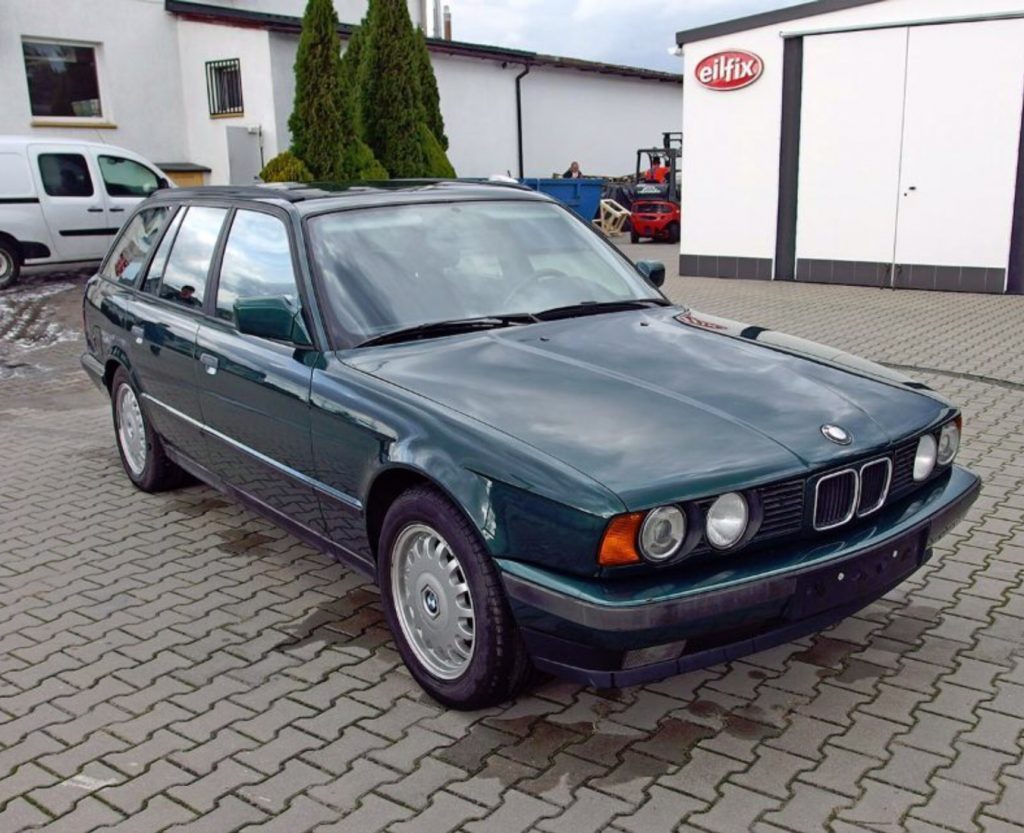
The main gears lost their locks, and the cross-axle differentials became free. But in this generation, an imitation of a rear differential lock (ABD system) was used. The principle of operation of the device was quite simple. When the sensors that determine the speed of rotation of the wheels recorded the difference in the revolutions of the right and left wheels (this happens when one of them starts to slip), the system slightly slows down the one that is spinning faster.
III generation
In 1998, there was a generational change in the all-wheel drive transmission from the Bavarians. As for the ratio of the distribution of torque, then this generation was also asymmetric. The rear wheels receive 62 percent, and the front wheels receive 38 percent of the thrust. Such a transmission can be found in station wagons and BMW 3-Series E46 sedans.
Unlike the previous generation, this system was equipped with completely free differentials (even the center one is not blocked). The main gears received an imitation of blocking.
A year after the start of production of the third generation of xDrive all-wheel drive transmissions, the company released the first model of the "Crossover" class. In the BMW X5, the same system was used as in the passenger cars of the third series. In contrast to that modification, this transmission was equipped with imitation of blocking of cross-axle differentials.

Until 2003, all three generations represented the FullTime full-time drive. Further, all four-wheel drive models of the auto brand were equipped with the xDrive system. In passenger cars, the third generation of the system was used until 2006, and in crossovers it was replaced two years earlier by the fourth generation.
IV generation
The latest generation of the all-wheel drive system was introduced in 2003. It was part of the base equipment for the new X3 crossover, as well as the restyled 3-Series E46 model. This system is installed by default on all models of the X-Series, and as an option - on other models, with the exception of the 2-Series.
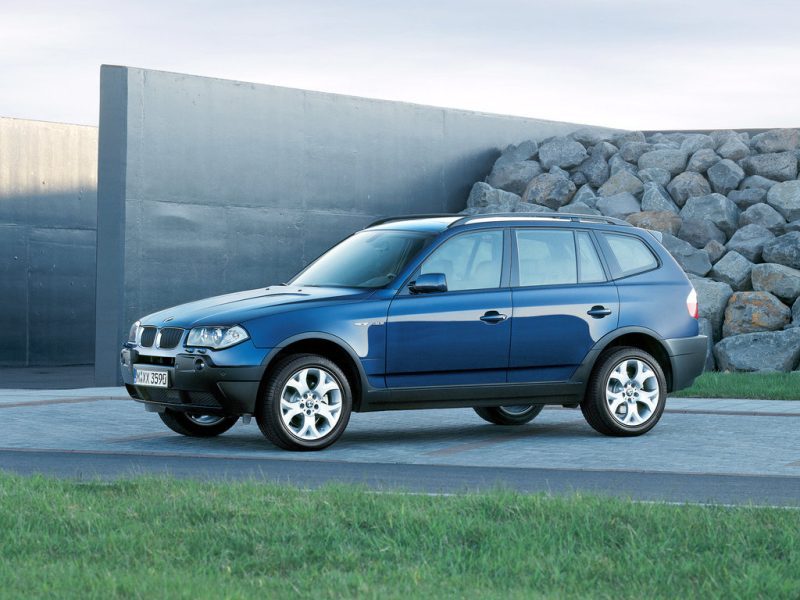
A feature of this modification is the absence of an interaxle differential. Instead, a friction multi-plate clutch is used, which is controlled by a servo drive. Under standard conditions, 60 percent of the torque goes to the rear axle and 40 percent to the front. When the situation on the road changes dramatically (the car ran into mud, got into deep snow or ice), the system is able to change the ratio up to 0: 100.
The principle of the system
Since there are more cars on the market with four-wheel drive of the fourth generation, we will focus on the work of this particular modification. By default, traction is constantly transmitted to the rear wheels, so the car is considered not all-wheel drive, but rear-wheel drive with a connected front axle.
A multi-plate clutch is installed between the axles, which, as we have already noticed, is controlled through a system of levers using a servo drive. This mechanism grips the clutch discs and, due to the frictional force, the chain transfer case is activated, which connects the front axle shaft.
The power take-off depends on the strength of the disc compression. This unit is capable of providing 50 percent torque distribution to the front wheels. When the servo opens the clutch discs, 100 percent of the traction goes to the rear wheels.
The operation of the servo is of an almost intelligent type due to the presence of a large number of systems associated with it. Thanks to this, any condition on the road can trigger the activation of the system, which will switch to the desired mode in just 0.01 seconds.
The following systems affect the activation of the xDrive system:
- ICM... This is a system that records the performance of the chassis of a car and controls some of its functions. It provides synchronization of the walker with other mechanisms;
- DSC... This is the manufacturer's name for the stability control system. Thanks to signals from its sensors, traction is distributed between the front and rear axles. It also activates the imitation of the electronic locking of the front and rear differential. The system activates the brake on the wheel that started to slip to prevent the transfer of torque to it;
- AFS... This is a system that fixes the position of the steering mechanism. If the car hits an unstable surface, and to some extent the braking system of the slipping wheel is triggered, this device stabilizes the car so that it does not skid;
- DTS... Traction control system;
- HDC... Electronic assistant when driving on long slopes;
- DPC... Some car models do not have this system. It helps the driver to control the car when cornering at high speed.
The active all-wheel drive of this automaker has one advantage, which allows the development to compete with analogues of other companies. It lies in the relative simplicity of the design and the scheme for implementing the torque distribution. Also, the reliability of the system is due to the lack of differential locks.
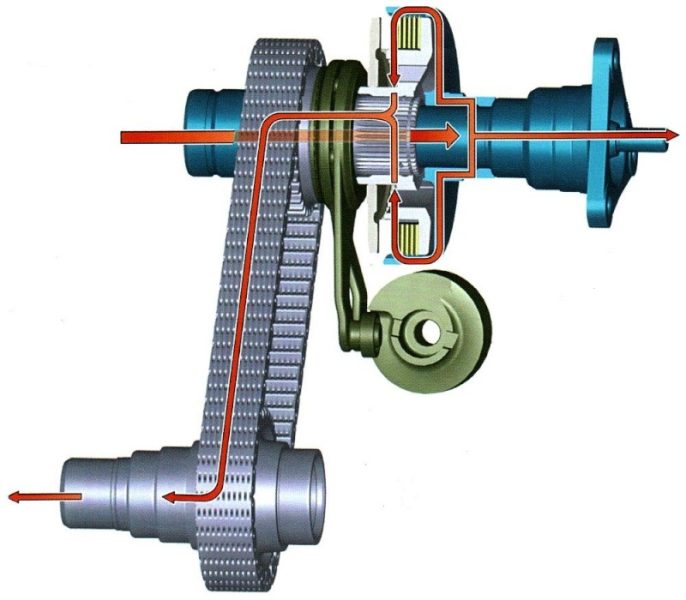
Here are some other benefits of the xDrive system:
- The redistribution of traction forces along the axles occurs by a stepless method;
- Electronics constantly monitors the state of the car on the road, and when the road situation changes, the system instantly adjusts;
- Facilitates control of driving, regardless of the road surface;
- The braking system works more efficiently, and in some situations the driver does not need to press the brake to stabilize the car;
- Regardless of the driving skills of the motorist, the car is more stable on difficult road sections than the classic rear-wheel drive model.
System operation modes
Despite the fact that the system is not able to change the torque ratio between the axles fixed, BMW's active xDrive all-wheel drive operates in several modes. As mentioned above, it depends on the situation on the road, as well as on the signals of the connected car systems.
Here are the typical situations in which the electronics can activate a change in power take-off for each axle:
- The driver starts moving smoothly. In this case, the electronics activate the servo so that the transfer case transfers 50 percent of the torque to the front wheels. When the car accelerates to 20 km / h, the electronics relaxes the effect on the friction center coupling, due to which the torque ratio between the axles smoothly changes by 40/60 (front / rear);
- Skid when cornering (why oversteer or understeer occurs, and what needs to be done in such cases, is described in another review) causes the system to activate the front wheels by 50%, so that they begin to pull the car, stabilizing it when skidding. If this effect cannot be controlled, the control unit activates some safety systems;
- Demolition. In this case, the electronics, on the contrary, makes the car rear-wheel drive, due to which the rear wheels push the car, turning it in the direction opposite to the rotation of the steering wheels. Also, the electronics of the car uses some active and passive safety systems;
- The car drove onto the ice. In this case, the system distributes power in half to both axles, and the vehicle becomes a classic all-wheel drive;
- Parking a car on a narrow road or driving at speeds above 180 km / h. In this mode, the front wheels are completely disabled, and all traction is supplied only to the rear axle. The disadvantage of this mode is that it is more difficult for a rear-wheel drive car to park, for example, if you need to drive onto a small curb, and if the road is slippery, the wheels will slip.
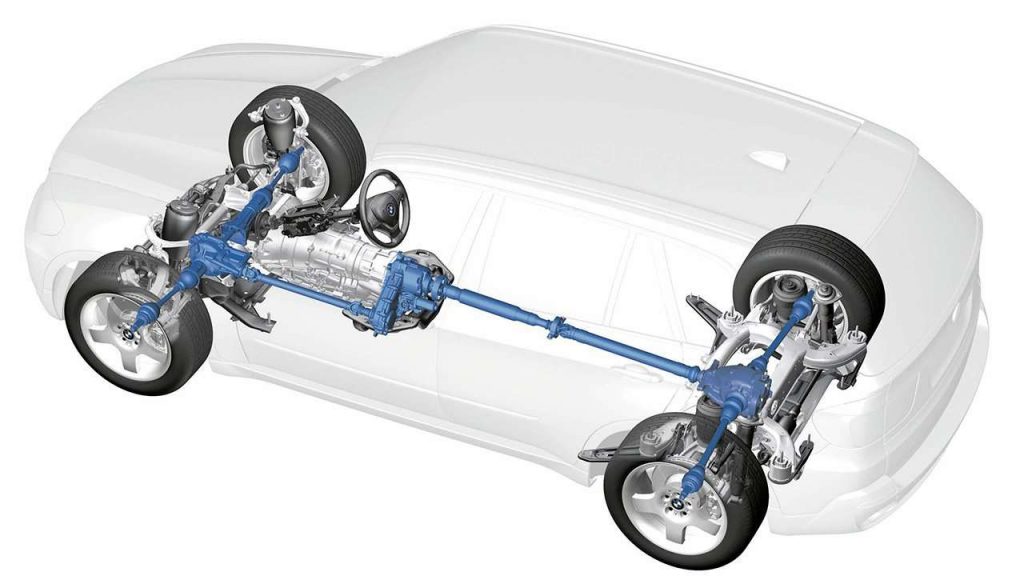
The disadvantages of the xDrive system are that, due to the lack of blocking of the center or cross-axle differential, a specific mode cannot be forcibly switched on. For example, if the driver knows for sure what the car will precisely enter in a particular area, he will not be able to turn on the front axle. It is activated automatically, but only when the car starts to skid. An inexperienced driver will begin to take certain measures, and at this moment the front axle will turn on, which can lead to an accident. For this reason, if there is no experience in driving such transport, it is better to practice on closed roads or on special sites.
Elements of the system
It is worth considering that modifications for passenger models differ from the options that crossovers are equipped with. Difference in transfer case transmission. In crossovers, it is chain, and in other models, it is gear.
The xDrive system consists of:
- Automatic gearbox;
- Transfer case;
- Multi-plate friction clutch. It is installed in the transfer case and replaces the center differential;
- Front and rear cardan gears;
- Front and rear cross-axle differential.
The transfer case for station wagons and sedans consists of:
- Front wheel drive;
- Servo control cam;
- Intermediate gear;
- Drive gear;
- Main lever;
- Multi-plate clutch;
- Rear axle drive mechanism;
- Servo motor;
- Several friction elements;
- A pinion gear connected by a servomotor.
The crossover case uses a similar design, except that a chain is used instead of an idler gear.
Multi-plate friction clutch
A special feature of the latest generation of the intelligent xDrive system is the absence of a center differential. It was replaced by a multi-plate clutch. It is driven by an electric servo. The operation of this mechanism is controlled by the transmission control unit. When the car is in difficult road conditions, the microprocessor receives signals from the stability control system, steering, chassis, etc. In response to these pulses, a programmed algorithm is triggered and the servo clamps the clutch discs with a force corresponding to the required torque on the secondary axle.

Depending on the type of transmission (for passenger cars and crossovers, different modifications are used), the torque in the transfer case through the gears or chain is partially supplied to the front axle shaft. The compression force of the clutch discs depends on the values that the control unit receives.
What ensures the efficiency of the system
So, the advantage of the xDrive system lies in the smooth and stepless redistribution of power between the front and rear axles. Its effectiveness is due to the transfer case, which is activated via a multi-plate clutch. It was told about her a little earlier. Thanks to synchronization with other systems, the transmission quickly adapts to changing road conditions and changes the power take-off mode.
Since the task of the system is to eliminate the slipping of the drive wheels as much as possible, vehicles equipped with it are easier to stabilize after a skid. If there is a desire to re-type (about what it is, read here), then, if possible, this option must be disabled or deactivated some systems that prevent slipping of the driving wheels.
Major faults
If there are problems with the transmission (either mechanical or electronic breakdown), then the corresponding signal on the dashboard will light up. Depending on the type of breakdown, a 4x4, ABS or Brake icon may appear. Since the transmission is one of the stable units in the car, a sharp complete failure of it occurs mainly when the driver ignores the signals of the on-board system or malfunctions preceding the failure of the transmission elements.
In case of minor malfunctions, a periodically flashing indicator may be displayed on the tidy. If nothing is done, over time, the blinking signal starts to glow constantly. The “weak link” in the xDrive system is the servo, which presses the discs of the central clutch to a certain extent. Fortunately, the designers foresaw this, and positioned the mechanism so that if it fails, it is not necessary to disassemble half of the transmission. This item is located outside the handout.
But this is not the only breakdown characteristic of this system. A signal from some sensor may be lost (contact is oxidized or wire cores are broken). Electronic failures may also occur. To identify errors, you can run a self-diagnosis of the on-board system (how this can be done on some cars is described here) or give the vehicle for computer diagnostics. Read separately how this procedure is carried out.
If the servo drive breaks down, the brushes or the Hall sensor may fail (how this sensor works is described in another article). But even in this case, you can continue driving to the service station by car. Only the car will be just rear-wheel drive. True, constant operation with a broken servo motor is fraught with failure of the gearbox, so you should not delay repair or replacement of the servo.
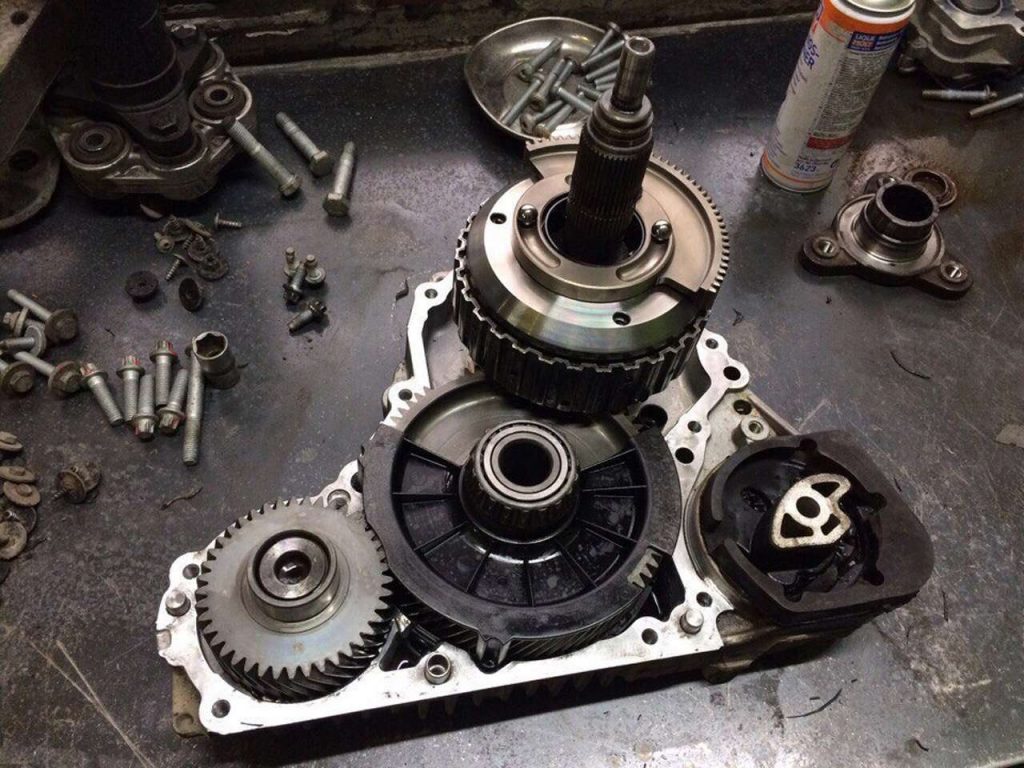
If the driver changes the oil in the box on time, the razdatka will “live” about 100-120 thousand. km. mileage. The wear of the mechanism will be indicated by the condition of the lubricant. For diagnostics, it is enough to slightly drain the oil from the transmission pan. Drop by drop on a clean napkin, you can tell if it's time to repair the system. Metal shavings or a burnt smell indicates the need to replace the mechanism.
One sign of problems with the servomotor is uneven acceleration (the car jerks) or the whistle coming from the rear wheels (with a working braking system). Sometimes, while driving, the system can redistribute power to one of the driving wheels so that the car more confidently takes a turn. But in this case, the gearbox is subjected to a heavy load and will quickly fail. For this reason, you should not conquer curves at high speeds. No matter how reliable the four-wheel drive or safety system is, they cannot completely eliminate the effect of physical laws on the car, so it is better for the sake of safety on the road to drive calmly, especially on unstable sections of the highway.
Hack and predictor Aviator
So, xDrive from BMW has proven itself so well that the automaker installs it on most passenger cars, as well as on all models of the “Crossover” segment with the X index. Compared to previous generations, this generation is reliable enough that the manufacturer does not plan to replace it with anything else. then the best.
At the end of the review - a short video on how the xDrive system works:
Questions and answers:
What is BMW X Drive? This is an all-wheel drive system developed by BMW engineers. It belongs to the category of permanent all-wheel drive systems with continuous and variable torque distribution.
How does the X Drive system work? This transmission is based on the classic rear-wheel drive scheme. The torque is distributed along the axes through the transfer case (a gear transmission controlled by a friction clutch).
When did X Drive appear? The official presentation of the BMW xDrive all-wheel drive transmission took place in 2003. Prior to this, a system with a constant fixed distribution of thrust along the axles was used.
What is the BMW all-wheel drive designation? BMW uses two types of drive. The rear is classic. The front-wheel drive is not used in principle. But all-wheel drive with a variable axle ratio is a relatively recent development, and it is denoted xDrive.
